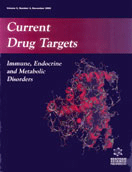Abstract
With the rapid increase in the number of patients developing type 2 diabetes mellitus and the lack of optimal therapies, much focus has been placed on the insulin-signaling pathway in the discovery of novel drug targets. Phosphatidyl Inositol 3-Kinase (PI3K) is central to mediating insulins metabolic effects. PI3K catalyzes the generation of phosphatidyl inositol (3,4,5) triphosphate (PIP3). Inhibition of PI3K activity results in a blockade of insulin signaling including glucose uptake and glyocogen synthesis. Thus, PIP3 is a critical mediator of insulin action. A family of phosphatidyl inositol phosphatases have been identified that counter-regulate PI3K activity by hydrolyzing PIP3 to phosphatidyl inositol bisphosphate at either the 3 or 5 position of the inositol ring. Mice lacking one of these enzymes, Src-Homology Inositol Phosphatase-2 (SHIP2), demonstrate increased insulin sensitivity, suggesting that pharmacological inhibition of SHIP2 could alleviate insulin resistance. Recent studies demonstrate elevated SHIP2 expression is associated with insulin resistance in human patients. Comparing the studies on SHIP2 and other phosphatases suggests how inhibition of SHIP2 leads to increased insulin sensitivity without deleterious effects. This review focuses on the emergence of SHIP2 as a target in the insulin-signaling pathway for the treatment of type 2 diabetes.
Keywords: ship2, type 2 diabetes mellitus, phosphatidyl inositol 3-kinase, phosphatidyl inositol, pi3k activity, src-homology inositol phosphatase-2



















